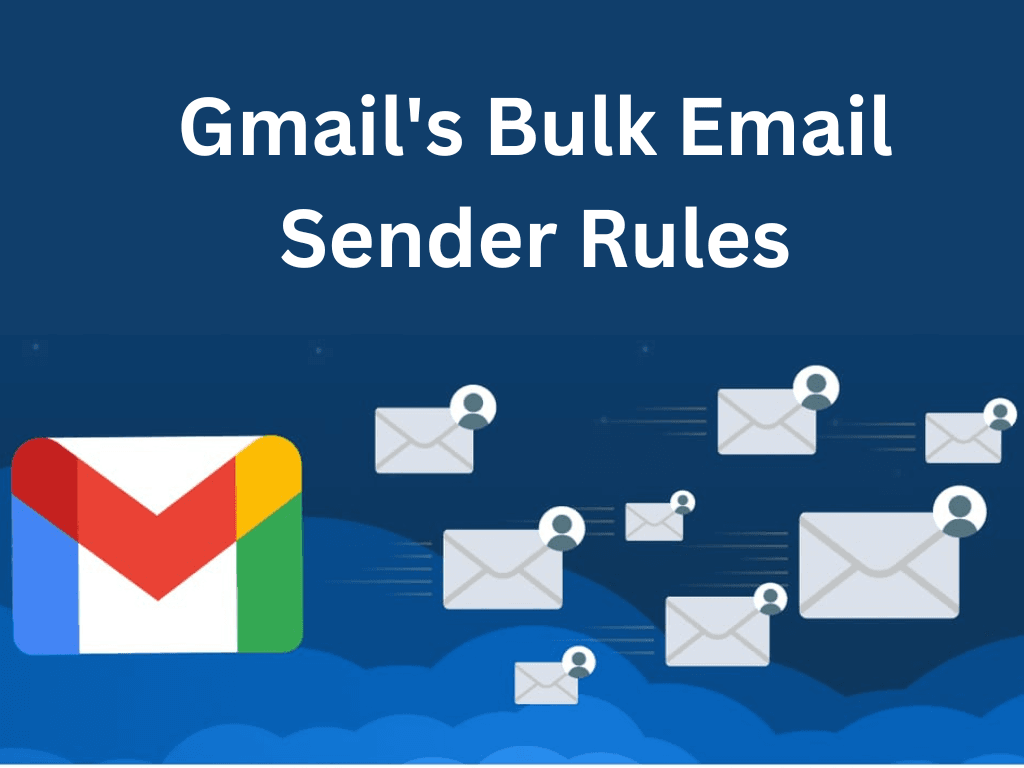To protect regular users, most email providers set requirements for anyone who wants to send a lot of messages. Gmail is no exception. This popular platform already has basic rules to prevent spam, and very soon, Google will be adding new bulk sender guidelines. Understanding these changes is essential for any organization that wants to reach Gmail users. Failure to comply could mean a drastic cut in email deliverability and engagement. You could even see your email account blocklisted. It’s serious stuff. This guide aims to help you understand the updated guidelines and successfully navigate your business through the changes.

What Are Bulk Sender Guidelines?
Bulk sender guidelines are a set of rules and best practices that email providers, like Gmail, enforce to regulate the sending of large volumes of emails. These guidelines are designed to prevent spam and ensure that users receive relevant and legitimate emails. For bulk email senders, adhering to these guidelines is crucial to maintaining good deliverability rates and avoiding penalties such as blocklisting or email throttling.
How to Know if You’re a Bulk Email Sender
You might be considered a bulk email sender if you:
- Send a large number of emails to Gmail users regularly.
- Manage email campaigns for marketing, newsletters, or promotional purposes.
- Use email lists that include a substantial number of Gmail addresses.
If your email-sending patterns fall into these categories, you need to pay close attention to Gmail’s bulk sender guidelines to ensure compliance and maintain high deliverability rates.
What Are the Changes to Gmail’s Bulk Sender Guidelines?
Gmail’s new bulk sender guidelines introduce stricter measures to further protect users from spam and improve the overall email experience. Some key changes include:
- Enhanced Authentication Requirements: Gmail will require stronger authentication protocols like SPF, DKIM, and DMARC to verify the legitimacy of email senders.
- Increased Focus on Engagement: Emails must show higher engagement rates (opens, clicks, replies) to avoid being flagged as spam.
- More Stringent List Management: Senders must regularly clean their email lists to remove inactive or invalid addresses. This is where Scrubby, an email validation tool for risky or catch-all emails, becomes invaluable.
- Improved Sending Practices: Gradual ramp-up of email volume and consistent sending patterns are now emphasized to build a positive sender reputation.
- Inbox Warm-up: Ensuring that your emails are more likely to reach the inbox rather than the spam folder. Inboxy, an inbox warm-up solution utilizing a private network of headless browsers, can help establish a positive sender reputation.
How to Prepare for Gmail’s New Bulk Sender Guidelines
Preparing for Gmail’s new bulk sender guidelines requires a proactive approach to ensure compliance and optimize deliverability. Here are some steps to take:
- Implement Strong Authentication Protocols:
- Ensure that your emails are authenticated using SPF, DKIM, and DMARC protocols. This helps Gmail verify the legitimacy of your emails and reduces the risk of being marked as spam.
- Focus on Engagement:
- Create high-quality, relevant content that encourages recipients to engage with your emails. Track engagement metrics and adjust your strategies based on what works best.
- Regularly Clean Your Email List:
- Use Scrubby to validate your email list and remove risky or catch-all emails. This reduces bounce rates and improves your sender reputation.
- Optimize Your Sending Practices:
- Gradually ramp up your email volume, especially if you’re sending to a new list or increasing your email frequency. Consistent sending patterns help build a positive sender reputation.
- Warm Up Your Inbox:
- Utilize Inboxy to warm up your inbox and improve deliverability. By using a private network of headless browsers, Inboxy helps ensure that your emails land in the inbox rather than the spam folder.
- Monitor and Adapt:
- Continuously monitor your email deliverability metrics and adjust your strategies as needed. Stay informed about any further updates to Gmail’s guidelines and be ready to adapt.
Conclusion
Navigating Gmail’s bulk sender guidelines is essential for maintaining high email deliverability and engagement. By understanding the changes and implementing best practices, you can ensure that your emails reach your recipients’ inboxes and avoid the risks associated with non-compliance. Utilize tools like Scrubby for email validation and Inboxy for inbox warm-up to enhance your email marketing efforts and secure your deliverability.
Stay proactive, monitor your performance, and keep adapting to the evolving email landscape to achieve the best results.